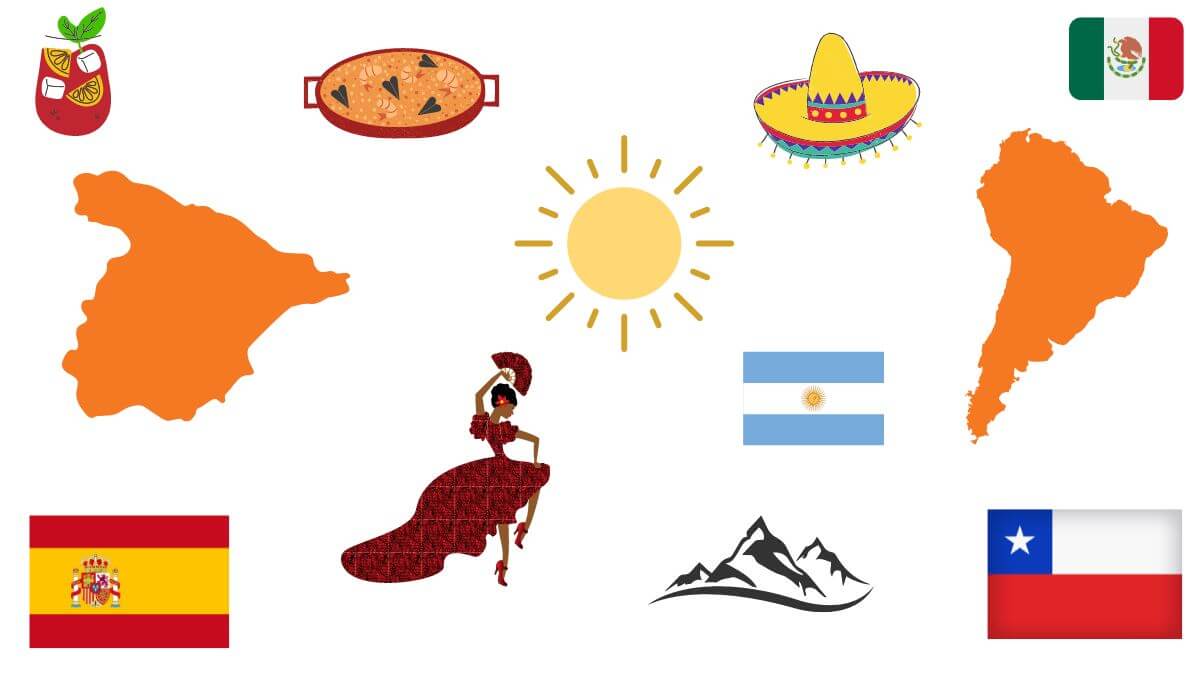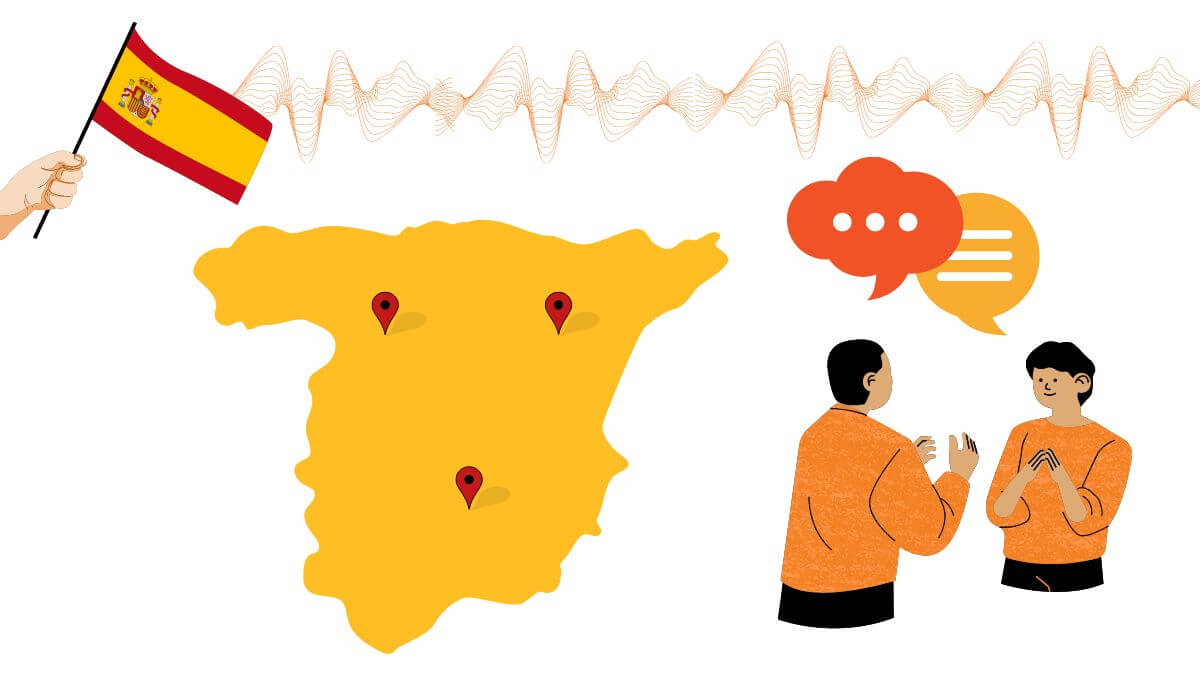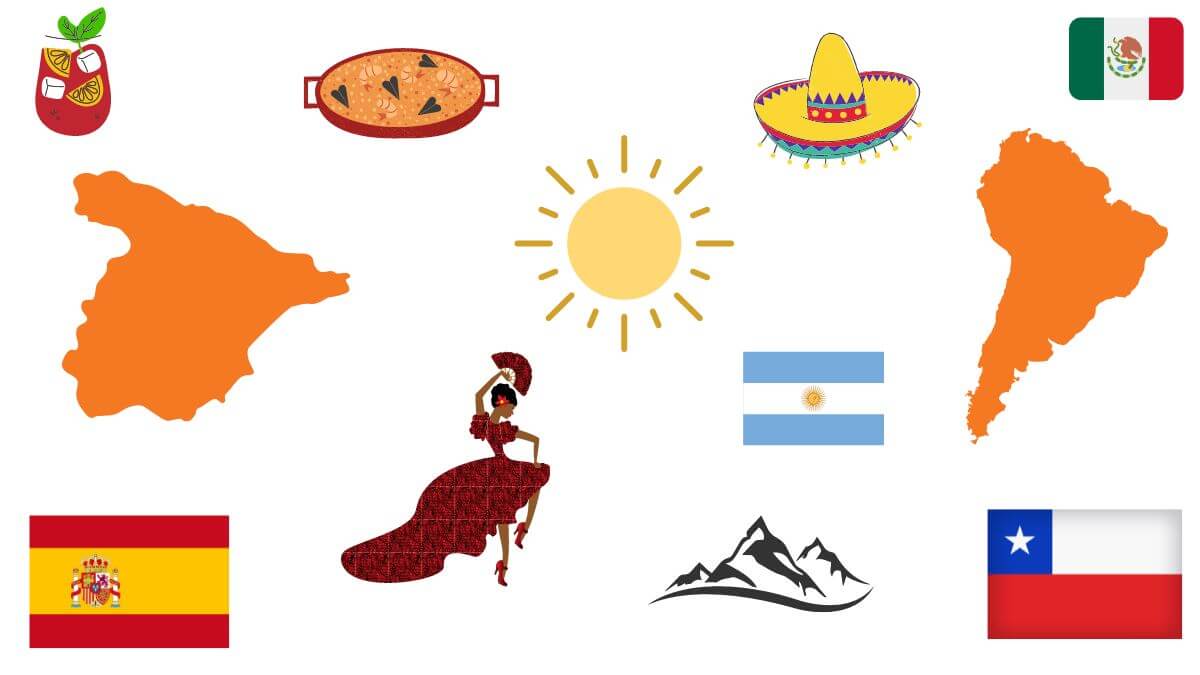Spanish is spread over a wide and rich geographical area. It is not uniform, but diverse.
This circumstance raises a question mark in language teaching. The different modes of the Spanish language are divided into dialects and colloquialisms.
First, a distinction must be made between language, dialect and speech. A language is an officially and socially recognized uniform code and system and the prestige associated with it. It includes a vocabulary, grammar and spelling. Dialect, on the other hand, is a subsystem of language used by a community in a given area, which contrasts with the other subsystems. Finally, speech is the linguistic expression of a very limited group or place.
In our Spanish courses you can learn all about the differences between a language and a dialect and about all the nuances that exist in the Hispanic world.
The question of language model arises particularly at the level of dialect. The choice of this language model varies depending on the reasons for learning. It is an abstraction and simplification of language to make it exemplary. The search for a prototypical model can be done through the confluence of two parameters: geographical and social. In this way, three possibilities are offered:
The Castilian model
It enjoys prestige both in Spain and abroad and is in line with the academic norm.
The closer model
In many places far from Spain, a geographically closer model is chosen for teaching, which is more in line with the interests of the students.
The general model
Another option is to look for the most general model of Spanish. The aim would be to teach Spanish in which the different types of the Hispanic world are embedded.
The model should be clear and contain common and frequent elements to make it useful and appropriate in most communicative situations. Regardless of the option chosen, the needs and interests of the target group should be taken into account.

The wide variety of forms existing in the Spanish-speaking world makes it necessary, in the case of hypothetical Spanish instruction for foreigners, for the teacher to adapt the instructional material and provide guidelines to determine the factors that determine the choice of one form or another in each communicative situation.
These forms are subject to great grammatical variation and it is important to work on them both in oral interaction and in written production. The main difficulties in teaching are caused by the variability of forms and habits and subtle differences in the conditions of use depending on the dialect area, the relations between speakers and their social status.
The use of “ustedes” instead of “vosotros“, “voseo” and the distribution of their pronominal and verbal variants are the most important elements in the study of forms of address in the ELE classroom. From a general point of view, the use of “usted” instead of “tú” is more frequent in the Hispanic world, since this form is used in the Americas, the Canary Islands, and western Andalusia.
The geographical distribution of the terms “usted”, “vos” and “vosotros” should be taken into account when teaching Spanish as a foreign language. Therefore, when teaching this nuance, it is necessary to emphasize that the exclusive use of “ustedes” is typical of American Spanish and to show guidelines for the ustedes/vosotros distinction.
Conversely, when teaching Spanish from an American perspective, emphasis will be placed on the use of “ustedes” rather than ustedes/vosotros in Iberian Spanish.
As for voseo, it is a standard form of address that for a time was mistaken for a marginal or stigmatized feature. However, this form enjoys great vitality. It is now prevalent in South America, particularly in Argentina, Uruguay and Paraguay, and is becoming increasingly widespread. Other countries where the voseo is used are Chile, Guatemala, Honduras, Nicaragua and Costa Rica, among others.
In addition to the geographical difference in forms of address, there is also a difference in use depending on the relationship between the partners:
Familiarity/respect
Relationship between equality/asymmetry
Constant treatment in any situation/contextual variations

So, we can say that a language is considered as such when it has a rich vocabulary of scientific and technical terminology. Moreover, its use is rooted in culture. On the other hand, it is considered a dialect if it has only rural, familiar, colloquial and vulgar lexicon. A language is specific to a country, while a dialect is specific to a region. A language has a standardized written form, while a dialect exists primarily in oral form.
This controversy has always raised many doubts among philologists and linguists. The main reason for this is the difficulty of defining the boundaries between the two concepts… When does a dialect become a language? How many dialects can a language have? These are some of the questions that arise.
The answer is that a language can be composed of several dialects, because while languages have their own characteristics that differentiate them from one another, dialects have no differences that prevent communication. In addition, linguistic standardization is present only in language. Finally, languages are spoken by a large number of people, unlike dialects, which tend to be used in a small geographical area by a limited number of speakers.
As far as we are concerned, it should be emphasized that the Spanish language was a dialect before becoming a language. When people ask how many languages there are in Spain, controversy ensues: some say four (Spanish, Galician, Basque, and Catalan), some say five by adding Valencian, and some point to Balearic, Castilian, or Canarian, among others.
Others will say that apart from Spanish, which is one of the languages born out of Latin, the others are dialects and idioms.
The Spanish Constitution does not help removing of doubts, since the text of the Basic Law only states in its third article that “Castilian is the official language of the State.”
All Spaniards have the duty to know it and the right to use it” and that “the other Spanish languages shall also be official in the respective Autonomous Communities, in accordance with their Statutes.” In other words, the 1978 Constitution guarantees the existence of several languages, but does not specify how many there are.




There are no comments on Differences between Spanish language and its dialects